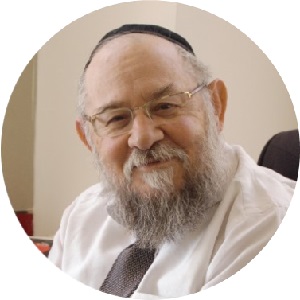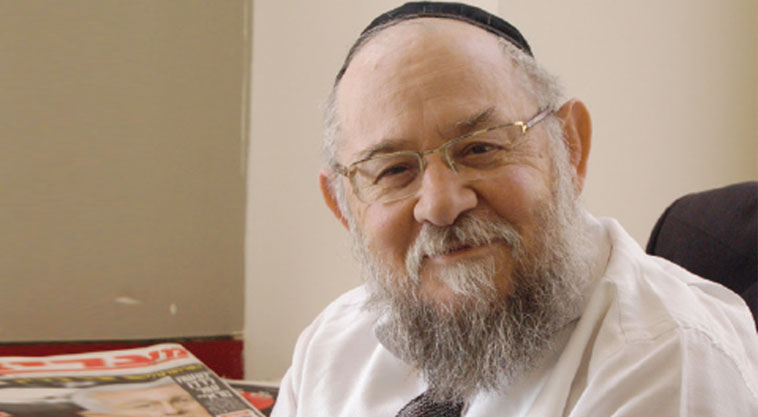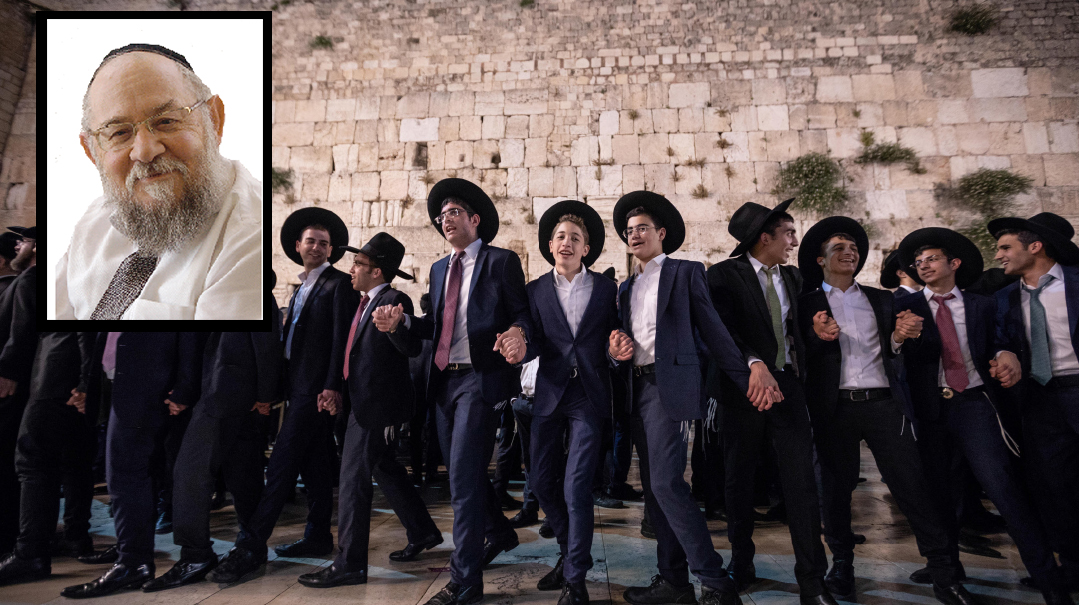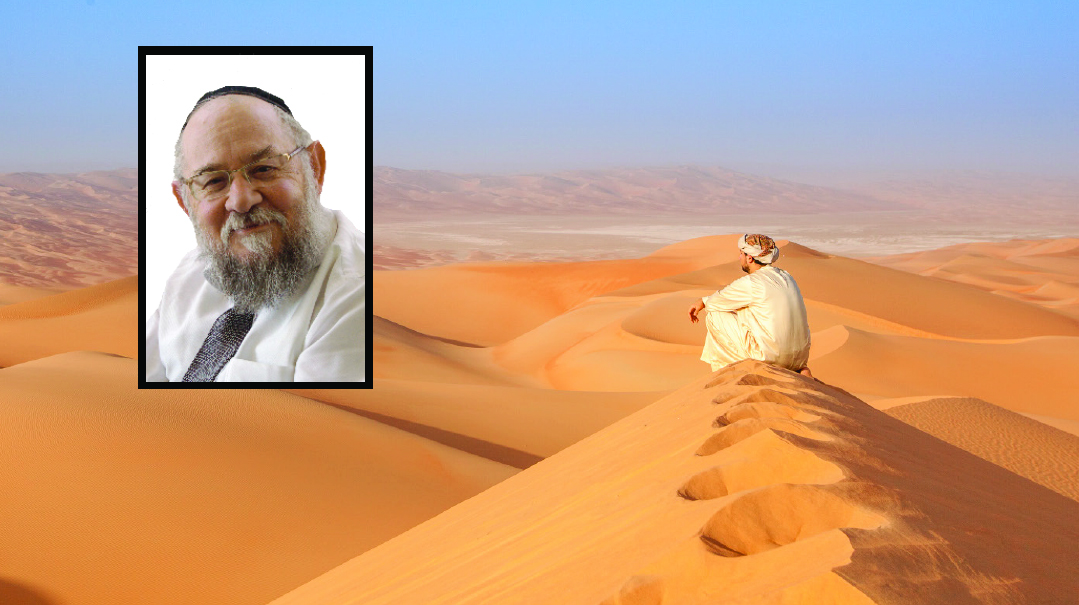Fight to the Death


O nce again I’m feeling that old ambivalence.
I feel it every year as Israel observes its Holocaust Remembrance Day on 27 Nissan. I actually should feel personally connected to it as my Uncle Yisrael Hy”d my father’s brother was commander of one of the bunkers that fell in the uprising — dying in that battle together with his wife and their daughter on Chol Hamoed Pesach of 1943.
For years I felt aggrieved that his name wasn’t mentioned in the chronicles of the ghetto revolt and for the pettiest of reasons: He was a Bundist not a Zionist. Indeed he was a son of Reb Leibel Grylak Hy”d a Gerrer chassid and a well-known Agudah askan in Warsaw; still Yisrael was a member of the anti-religious and anti-Zionist workers’ movement known as the Bund which unfortunately captured the hearts of many frum young people of the time.
Although survivors testified that Uncle Yisrael took a leading role in the uprising the books that came out in the early years of the State — inspired by the secular Zionist left — omitted his name just as they omit the names of the Revisionists who according to a more recent book by former Defense Minister Moshe Arens formed the backbone of the revolt. (See Flags Over the Warsaw Ghetto published in 2011). And years after the events a book published in Argentina by Bundist survivors who settled there recounted the lives and deaths of members of their movement who took part in the uprising including my uncle Hy”d.
But this was merely a small personal grievance and of no real importance. The real cause of my reservations about Yom HaShoah was the State’s sickeningly distorted approach to commemoration of the Holocaust when the memorial day was established. In the view of the secular Zionist leadership that instituted it the purpose of the day was to glorify the ghetto fighters to set them apart from the millions of other victims of the Holocaust who “went like sheep to the slaughter.” Unlike those submissive “galus Jews” who offered no resistance according to the old secular Zionist narrative the heroic ghetto fighter who met his death with a weapon in hand was part of an ideological campaign to promote the tough new model of the proud “Eretz Yisrael Jew” and to sow rejection of the supposed slave mentality of his European counterpart.
In fact before the day was legally established in 1953 it was originally proposed to be on the 14th of Nissan — Erev Pesach the anniversary of the Warsaw Ghetto uprising (on April 19 1943). While most people today know the day simply as Yom HaShoah its official name is “Yom Hazikaron l’Shoah ve’l’Gevurah — Holocaust and Heroism Remembrance Day.”
This plain distortion of the facts has always infuriated me. As chareidi journalist Yehudah Nachshoni an Auschwitz survivor himself wrote in the late 1950s “I am not prepared to exalt the ghetto fighters who fought out of desperation with no hope of survival for the purpose of putting all the rest of the Jewish People in their shade.”
Heroism is not measured only by physical resistance to an enemy. It cannot compare to the spiritual heroism shown by millions of Jews on the way to their deaths. But the Zionist establishment of those days revered only physical power. Their only faith was that “my strength and the power of my hand have accomplished this for me.” This was taken so literally that once at an Independence Day military parade a huge sign was displayed reading “Yisrael b’tach b’Tzahal ezreinu umagineinu hu” (a heretical distortion of the pasuk in Tehillim 115:9 substituting the IDF for Hashem). That desecration provoked a massive outcry and the sign was soon taken down. But it accurately reflected the atmosphere of those days when many were still intoxicated with Israel’s victory in the 1948 War of Independence (baruch Hashem) and their newly-won freedom.
But sobering events came and people began to see things in truer proportion. I remember once in the early 1960s when I was serving the army reserves for a month and it happened to be at this time of year. Our commanding officer a young man from a kibbutz affiliated with the Shomer HaTzair a radical-left anti-religious Zionist movement assembled us on Yom HaShoah and made a short speech that surprised me. After speaking of the heroism of the ghetto fighters and the partisans who struggled to liberate Europe from the Nazis and save the remaining Jewish population he said “I want you to know that although we commemorate the Holocaust close to the day that the Warsaw Ghetto Uprising ended that doesn’t mean that Mordechai Anielewicz and his comrades were the only heroes. A woman in Auschwitz who saved up her daily rations of margarine until she had enough to light a Shabbos candle — that is an example of heroism of freedom. A woman who doesn’t lose her freedom of spirit even in that Gehinnom of cruel death extreme hunger and continual humiliation and she finds a way of fulfilling the mitzvah she’s supposed to fulfill — to me that is the heroism of the human spirit that doesn’t surrender and doesn’t cave in against impossible odds against forces that are trying to deprive it of its humanity. Maybe it sounds strange to you hearing such words from a soldier from an officer. But we need to recognize that heroism has many faces.”
It did indeed sound strange to me true as his words were hearing them not only from a soldier and an officer but from a secular-indoctrinated kibbutznik. Yet those words indicated a certain change of direction in Israeli society.
The kosher literature that has flourished in recent decades has borne witness to Jewish heroism in countless stories of spiritual resistance in those dark days painting an incredible picture of mesirus nefesh in the service of Hashem under conditions beyond our imagination. True the Jewish People did not resist with weapons of war and not just because they had no weapons but mainly because the arch-demon developed psychological methods to break people’s spirit taking away all their will to resist. In those days of pride after the War of Independence there was plenty of arrogant talk among those who took part in the fighting and looked down on those who had gone quietly to their deaths.
“If I’d been there…” was the word of the day. One writer who went by the name K. Shabtai and fought as a partisan in Bialystok wrote an incisive pamphlet against that superior attitude citing evidence that millions of Russian soldiers who fell captive to the Germans also showed no power of resistance when the Germans subjected them to abuse and exterminated many of them. Despite the fact that Shabtai had been privileged to fight back he would not tolerate the insult to the millions of Jewish martyrs.
Yet once again this year the programs commemorating the Holocaust in the mainstream media failed to mention the heroism of the Jews who kept mitzvos using every resource they could muster in the midst of that inferno upholding their humanity and their faith to their last breath on the threshold of the gas chambers or teetering at the edge of the mass graves.
I cannot be at peace as long as Israel’s leaders continue to display the boastful arrogance of the early Zionist establishment and to convey the message that only a strong army can save the Jewish People. Certainly within the framework of obligatory hishtadlus we must have a strong army and baruch Hashem HaKadosh Baruch Hu has granted us that advantage which we fervently hope will deter the many enemies who surround us. But how is it that Sheim Shamayim has been forgotten amid all this glorification of Israel’s military strength?
And so it is as each year when Israel’s Holocaust Remembrance Day come around I remain torn. (Originally featured in Mishpacha Issue 658) ext
Oops! We could not locate your form.




